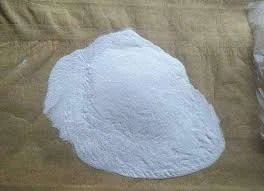The Significance of Cellulose Material in Modern Applications
Cellulose, a complex carbohydrate and a primary component of plant cell walls, is the most abundant organic polymer on Earth. Its unique structure and properties make it an integral material across various industries, influencing everything from textiles to biofuels and pharmaceuticals.
The Significance of Cellulose Material in Modern Applications
In the textile industry, cellulose is the backbone of natural fibers like cotton, flax, and rayon. These fibers are prized for their comfort, breathability, and ability to absorb moisture. However, advancements in cellulose processing have led to the development of innovative materials such as lyocell, which is produced from sustainably sourced wood pulp. Lyocell fibers are not only biodegradable but also have luxurious softness, making them highly sought after in fashion and home textiles.
cellulose material

Furthermore, cellulose is making waves in the packaging sector. Biodegradable packaging solutions derived from cellulose films are emerging as effective alternatives to traditional plastic. These cellulose-based materials can provide excellent barrier properties, protecting products from moisture and oxygen while also being compostable. This innovation aligns with global efforts to reduce plastic pollution, thereby promoting a circular economy.
The pharmaceutical industry also utilizes cellulose in various forms. Microcrystalline cellulose is a common excipient used in tablets and capsules, providing bulk and aiding in the efficient delivery of active ingredients. Its non-toxic nature and compatibility with a wide range of drugs make it a preferred choice for formulators.
In terms of energy, cellulose is a key player in the biofuel sector. As a renewable resource, cellulose can be converted into bioethanol, contributing to energy sustainability. This process not only helps in reducing dependency on fossil fuels but also supports agricultural practices, as biomass can be produced from various agricultural residues.
In conclusion, cellulose material stands out due to its versatility, sustainability, and biodegradable nature. As industries increasingly focus on environmentally friendly solutions, cellulose's role is set to expand, driving innovations that align with global sustainability goals. The potential of cellulose goes beyond its current applications, opening doors to new materials and technologies that can positively impact both the economy and the environment.
-
The Application and Significance of Construction RdpNewsMay.19,2025
-
Industrial Grade HpmcNewsMay.19,2025
-
Building Coating Adhesive Building Coating Adhesive HpmcNewsMay.19,2025
-
Application Of Hpmc For Detergent For Detergent In DetergentsNewsMay.19,2025
-
Application Of Hpmc Cellulose In Cement-Based MaterialsNewsMay.19,2025
-
Application Of High Quality Hpmc For Construction In The Field Of ConstructionNewsMay.19,2025




